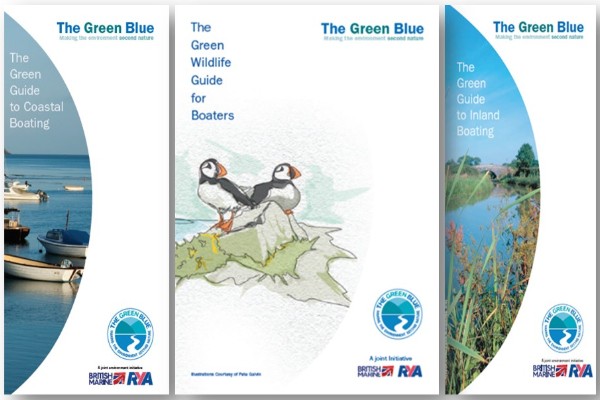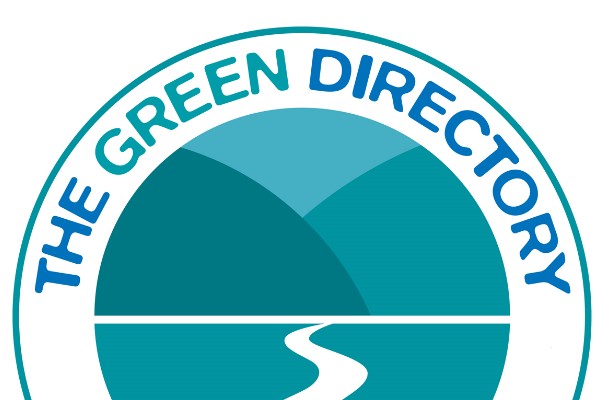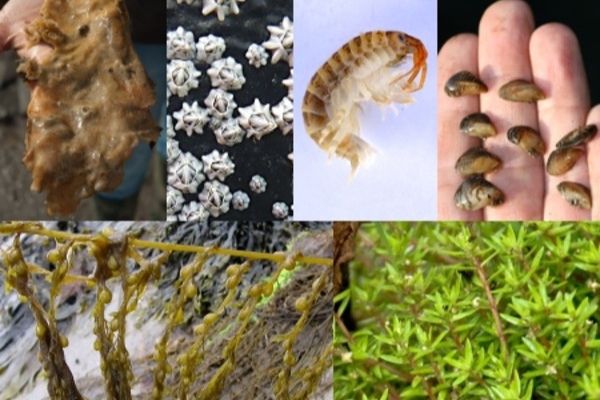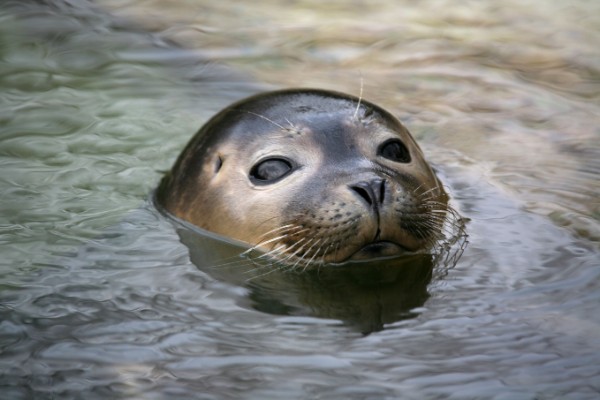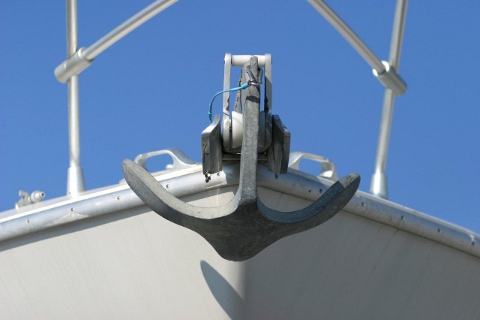Invasive Species Prevention
WHAT IS THE ISSUE?
Invasive animal and plant species are one of the top 5 highest risks to global and UK biodiversity. They cause serious environmental problems that can be irreversible and disrupt recreational boating by clogging up propellers, inlets and outlets, damaging boats, and blocking up waterways making it hard to navigate and expensive to eradicate and control. As boaters we have an important role to play to ensure we minimise the spread of these harmful invasive species into and around UK waters by understanding more about them and following the best practice provided below.
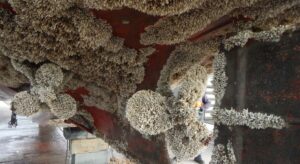
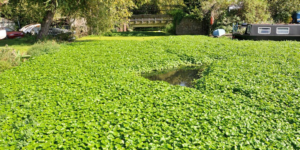
WHAT ARE INVASIVE SPECIES?
A non-native species is an animal or plant that has been introduced to an area outside of its natural past and present distribution. There are many non-native animals and plants in Britain, both terrestrial and aquatic. Some cause minimal harm, but some have the ability to spread and cause damage to the environment, the economy, human health and disrupt the way we live: these are referred to as invasive species. They can be small and hard to spot so are easily spread on damp equipment and clothing. You can help to protect the environment and the boating activities you enjoy by keeping your boat, equipment and kit free from invasive species.
HOW DO THEY SPREAD?
Invasive species can be transported the UK in a number of different ways, including by shipping vessels, aquaculture industries and accidental/intentional release. They can also be transported from place to place by hitching a ride on boat hulls, anchors and propellers, or being carried in ballast and bilge water.
ENVIRONMENTAL IMPACTS
- They introduce and spread disease
- Can smother the seabed, river beds, rocks and other surfaces
- Block sunlight from reaching other plants
- Out-compete native species for space and food/nutrients
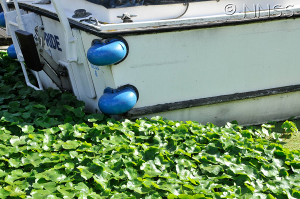
Freshwater Invasive Species Example
Zebra Mussel (Dreissena polymorpha):
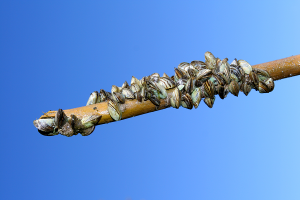
Zebra mussels are fast-growing and can be found in fresh or brackish water. They can grow up to 20 – 40 mm in length and are a brownish-yellow colour with a characteristic dark and light coloured zigzag banding. Zebra mussels can be found in many inland waters in England, and in parts of Wales and Scotland, and are already causing problems in many areas in Britain, blocking engine cooling water intakes resulting in engines over-heating.
How can you identify INNS?
• GB Non-Native Species Secretariat (NNSS) Information Portal
Report sightings of invasive species:
• iRecord App: All Invasive Non-Native Species (INNS)
RECREATIONAL BOATING IMPACTS
- Restrict navigation by blocking waterways
- Clog up propellers, inlets and outlets
- Increase management costs of our waterways
- Increase in hull and equipment biofouling
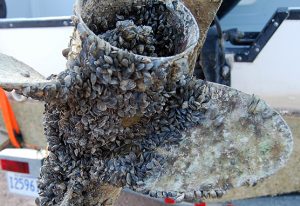
Marine Invasive Species Example
Trumpet Tube Worm (Ficopomatus enigmaticus):
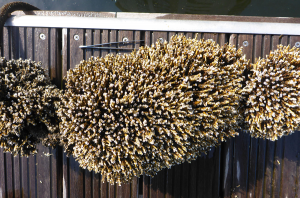
This Australian tube worm builds and inhabits white calcareous tubes up to two mm in diameter and ten cm long, with distinctive collar-like rings at irregular intervals. It has been found in all southern ports between Pembrokeshire and the Thames estuary, with further records of sightings from Barrow-in-Furness, Cumbria and Ireland.
Its preferred habitat is in brackish water estuaries, harbours, marinas and lagoons. It colonises hard substrates including man-made surfaces (pontoons, boat hulls etc.), rocks and shells.
WHAT CAN YOU DO?
On the Water:
- Avoid sailing or motoring through water plants and weed if possible. This can chop up plants and can spread them further.
- If the boat is on the water but not in use and stationary for a period of time, if possible, raise propellers out of the water to minimise the risk of species entering the engine.
- Use your boat regularly to prevent biofouling of the hull and engine.
- If an anchor has been used, remove any fouling and wash before stowing.
On Land:
- Store boats and outboard engines in a location where any run-off does not drain into a waterbody (e.g. drains, gullies or rivers).
- Return any engines to their vertical down position to drain.
- Use general waste bins to dispose of any biofouling.
Antifouling
If boats are normally kept in the water, the Check, Clean, Dry approach may not always be a practical method of preventing the spread of INNS:
- Applying antifoul and good maintenance are the best way of preventing invasive species attaching. See our Choosing an Antifoul page.
CHECK, CLEAN AND DRY!
The best way to protect both your stretch of water and others around the UK from INNS follow the Check, Clean and Dry approach to removing INNS from your boat, equipment and clothing.
Check
- Check for any plant or animal material on your boat, equipment and clothing. Pay particular attention to areas that are damp or hard to inspect.
- Remove visible fouling and put it in the bin, not back in the water.
Clean
- Wash your boat, equipment and clothing that has come into contact with the water thoroughly with tap water (including outboard, trailer and trolley/vehicle tyres). Pay attention to any crevices.
- For boats kept in the water permanently or not lifted often, remove biofouling regularly from the hull with a sponge or soft brush to prevent build up.
- Choose a marina with a filtered boat wash down facility that can capture not only biofouling, but any antifoul residue.
- Ensure removed biofouling is collected and disposed of in a bin.
Dry
- When recovering your craft drain water from every part and all equipment that can hold water, e.g. water that collects in bilges, base of the mast and centre board casing before leaving a site
- Clothing and equipment should be thoroughly dried for as long as possible before it is used elsewhere.

